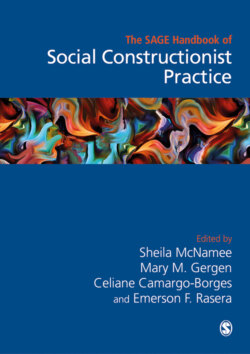Читать книгу The Sage Handbook of Social Constructionist Practice - Группа авторов - Страница 14
На сайте Литреса книга снята с продажи.
Theory and the Provisioning of Practice
ОглавлениеWith the contours of a constructionist orientation in place, we return to the question of how to account for the enormous watershed in professional practices accompanying these dialogues. Here it is first helpful to consider some of the reasons why the practical contributions of positivist social science were so unremarkable. At the outset, the alliance of social science with positivist foundationalism, carried with it a range of restrictions. These included limits on the aims of inquiry, assumptions about the nature of the subject matter, the relationship between the observer and the observed, the acceptable forms of explanation, and methods of research. Such restrictions in what constitutes knowledge and its acquisition ultimately limited the potentials of the social sciences in terms of their offerings to society.
For example, the distinction between knowledge making and its application posed a major obstacle to practical innovation. On the one hand, this meant that the research community could proceed in generating and testing theories of sweeping scope, without regard to societal utility. Programs of experimentation, along with complex sampling and statistical procedures, were placed in the service of theories without obvious application. The challenge of application was left to outsiders, often viewed by the research community as parasitic. Thus, for social practitioners such as therapists, organizational leaders, social workers, human service workers, and so on, the academic community had little to offer. And too, should practitioners take the initiative in exploring the scientific offerings, they would frequently encounter an impenetrable thicket of ‘jargon’. They were not the intended audience. The hope that basic social science could contribute to flourishing societal practices began to fade.
The emergence of more practically focused social sciences – such as education, organizational behavior, and social work – did speak more directly to societal needs. However, inquiry in these domains was largely conducted within a positivist paradigm, and thus subject to positivist restrictions and assumptions. For example, one might propose a theory of organizational leadership, and proceed to generate data to support the claims. Counter-claims might soon appear, accompanied by relevant statistics. Conflicts would then ensue regarding the methodological purity of the various findings, the clarity and coherence of the conceptual claims, and so on. More research, more conceptual distinctions … and the route to application was occluded.
Let us turn, then, to the relationship between a constructionist orientation to knowledge and its generative relationship to societal practices. We focus in particular on five animating forces.
